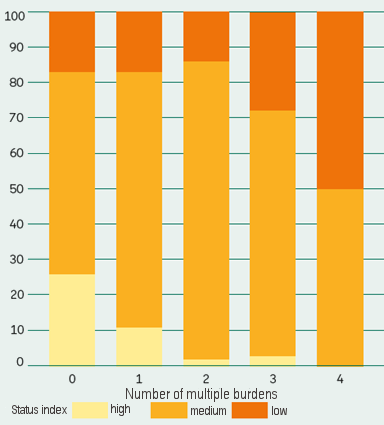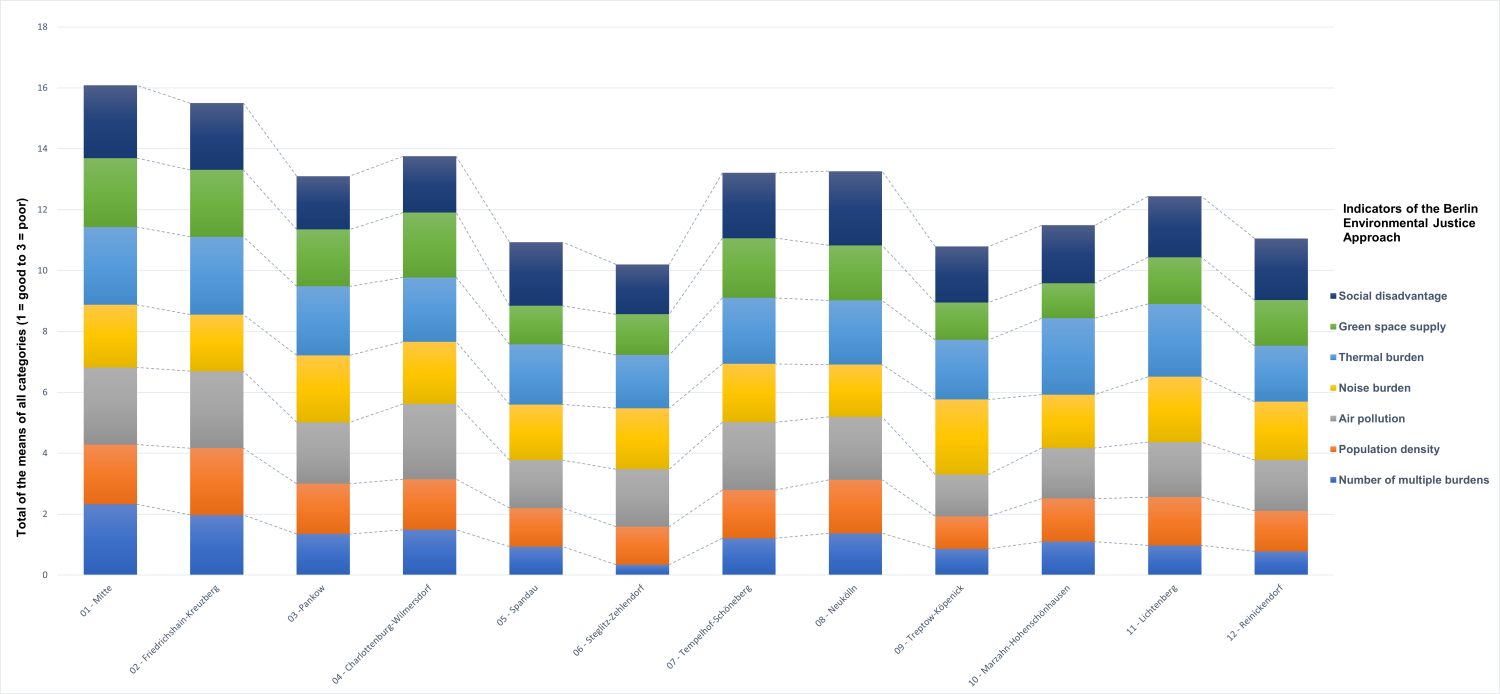Spandau, Steglitz-Zehlendorf and Treptow-Köpenick are the boroughs that are quantitatively least affected by the investigated environmental burdens.
Treptow-Köpenick is the ‘leader’ when it comes to air quality and green space supply. In terms of social burdens, it is also one of the least affected boroughs.
Spandau stands out with an equally very good green space supply. Air pollution and the climate are largely unproblematic, especially in the outer areas of Hakenfelde, Gatow and Kladow.
Steglitz-Zehlendorf takes first place in the overall assessment according to Figure 7, i.e. the added means of the individual categories result in the lowest total number. What is particularly striking is the considerably lower number of multiple burdens compared to the rest of Berlin, which indicates a large spread of unburdened or only slightly burdened PLA. Only 4 of the 44 planning areas, clustered around the service area of Schloßstrasse, are subject to twofold burdens. There are no PLA with predominantly simple residential areas, which also makes it a unique borough in Berlin.
For more in-depth information on the boroughs, please refer to the comprehensive report on the updated data and maps of the Berlin Environmental Justice Concept. It presents each of Berlin’s boroughs in a detailed profile (SenUMVK 2022, only in German).
The figures used in the report to compile the borough-specific pie charts are attached as spreadsheets to the data linked to Figure 7 in the Environmental Atlas in the list of Figures and Tables on Environmental Justice 2021/ 2022.


